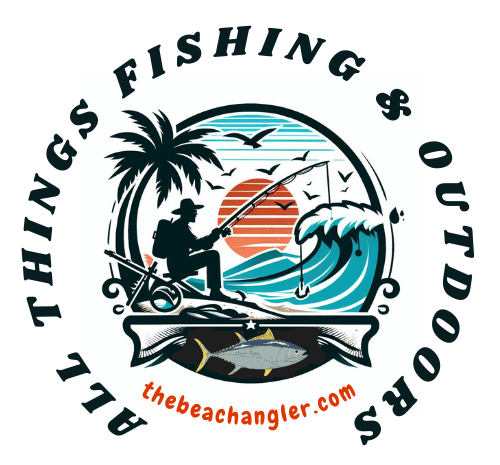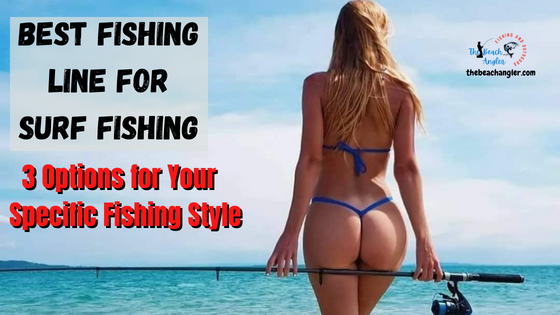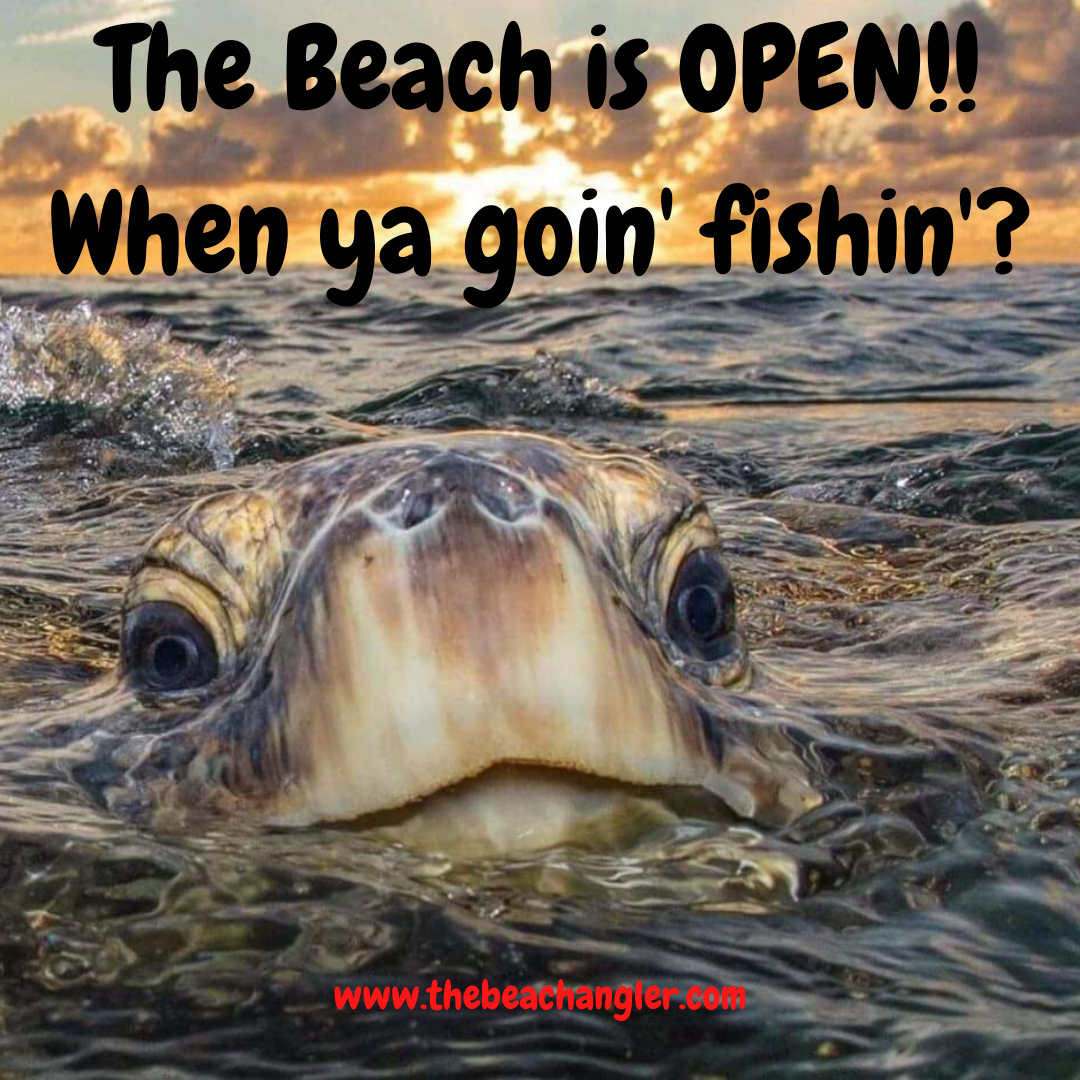If you’re considering trying your luck at surf fishing, you’ll notice all the specialized gear and tackle. Take fishing line, for example, there are so many options when it comes to fishing line in general, and surf fishing presents some unique challenges. So, what is the best fishing line for surf fishing?
I mean there are so many choices from monofilament, to braid to fluorocarbon with options from colors, number of strands, hollow core, co polymer, strength or test, and even hybrid lines. It’s hard to even know where to begin. But, a good starting point is to decide where you will be fishing, what will you be fishing with, and what will you be fishing for.
Quick Look
Fishing line for surf fishing consists of three main options. 1.) Monofilament, 2.) Braid, and 3.) Fluorocarbon. Each has its own unique advantages and none of them are the best for all possible surf fishing scenarios. Monofilament is the most economical and recommended as the best overall surf fishing line. It has good abrasion resistance, low underwater visibility, and adequate cast ability. Braid, by far, has the best strength to diameter ratio, low stretch for better sensitivity and best cast ability. Fluorocarbon is nearly invisible underwater with good abrasion resistance but its stiffness and larger diameter hinder its cast ability making it a better choice for leaders than main line.
If you’re tossing soft plastics for surf perch along the California coast or chasing 10 foot Tiger sharks off the beach in Florida or Texas, your line choices will be drastically different. In fact, all of your surf fishing gear can be different depending on your fishing situations.
| Monofilament | Braid Fishing Line | Fluorocarbon line |
|---|---|---|
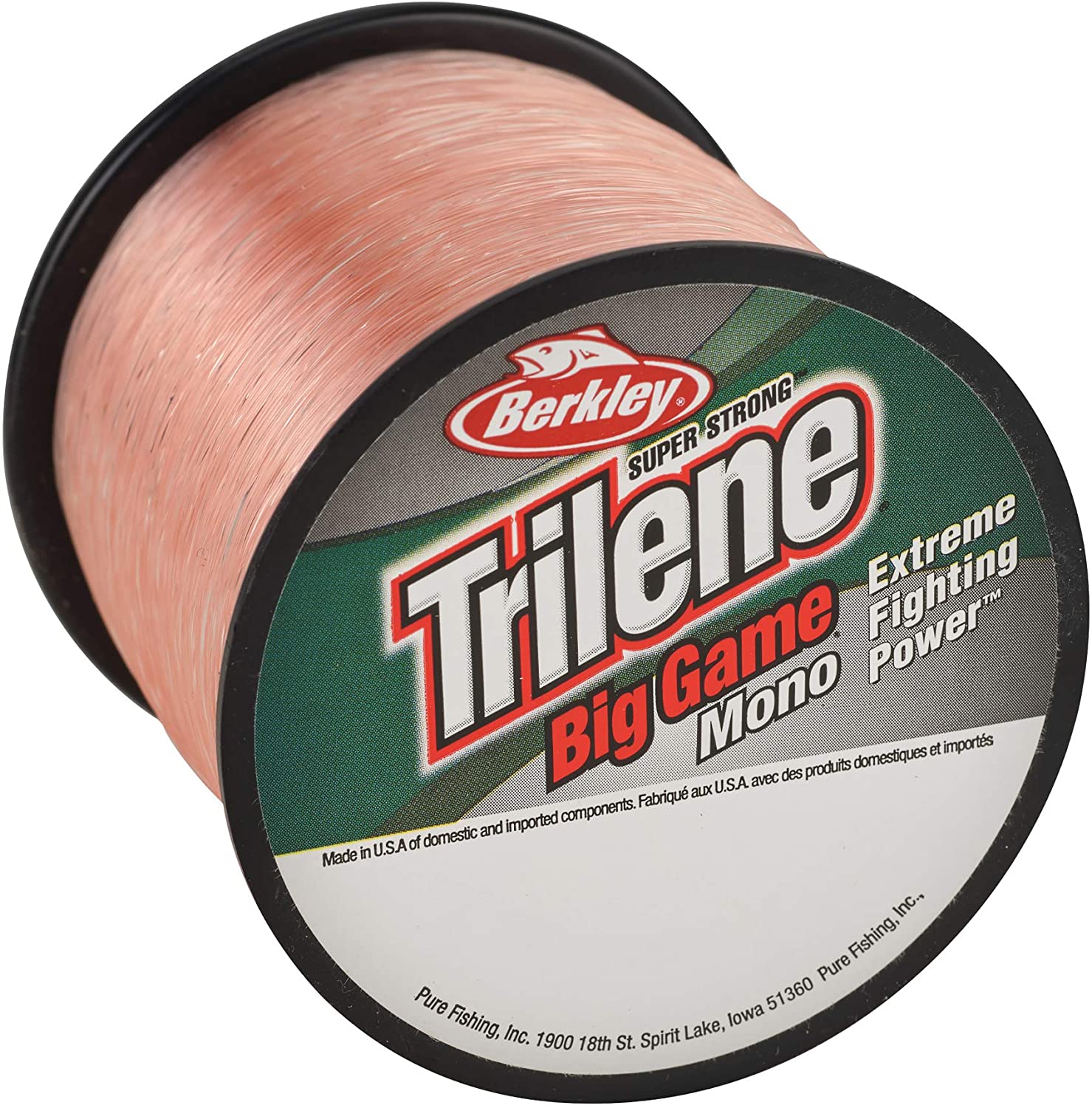 | 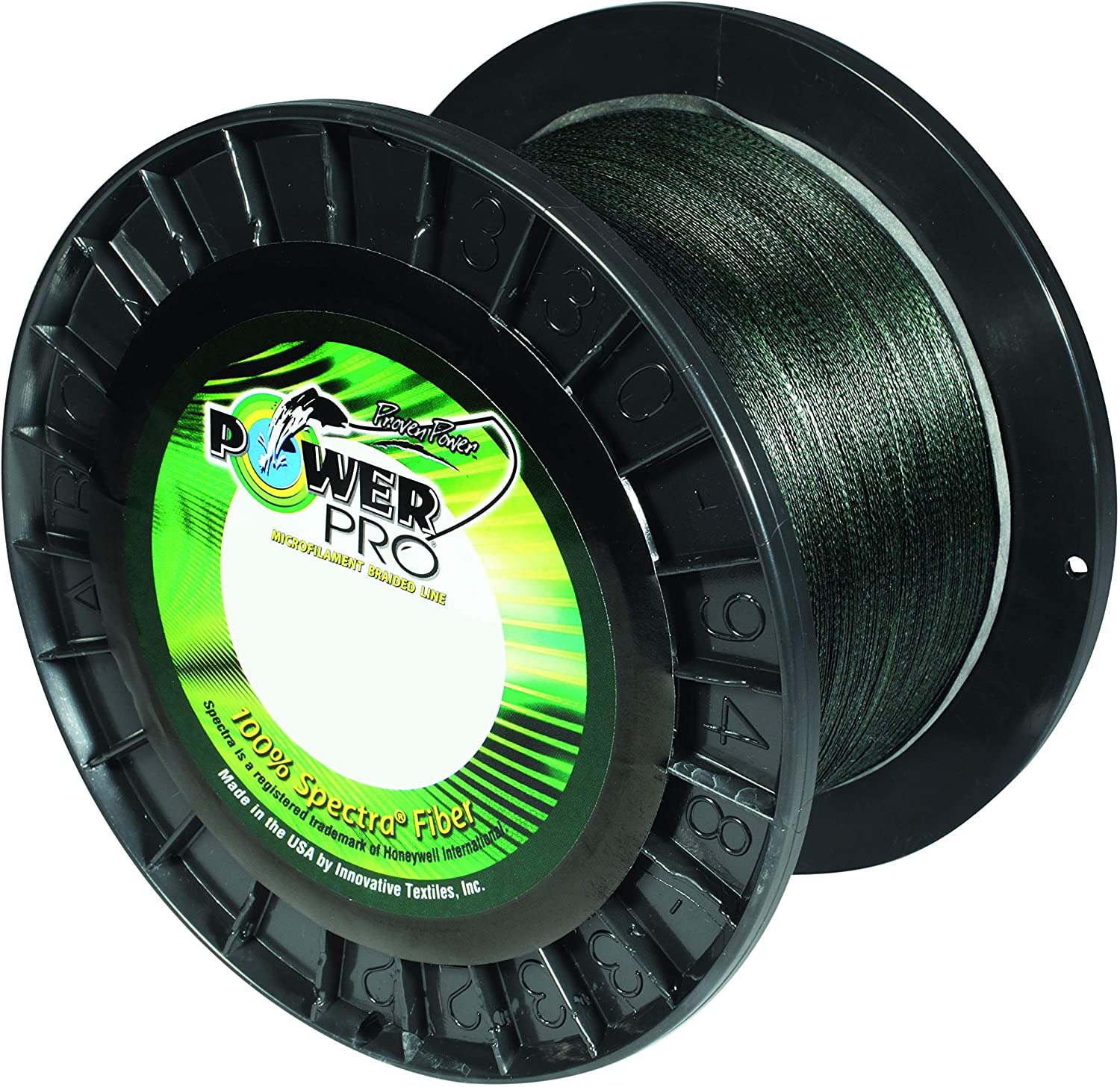 | 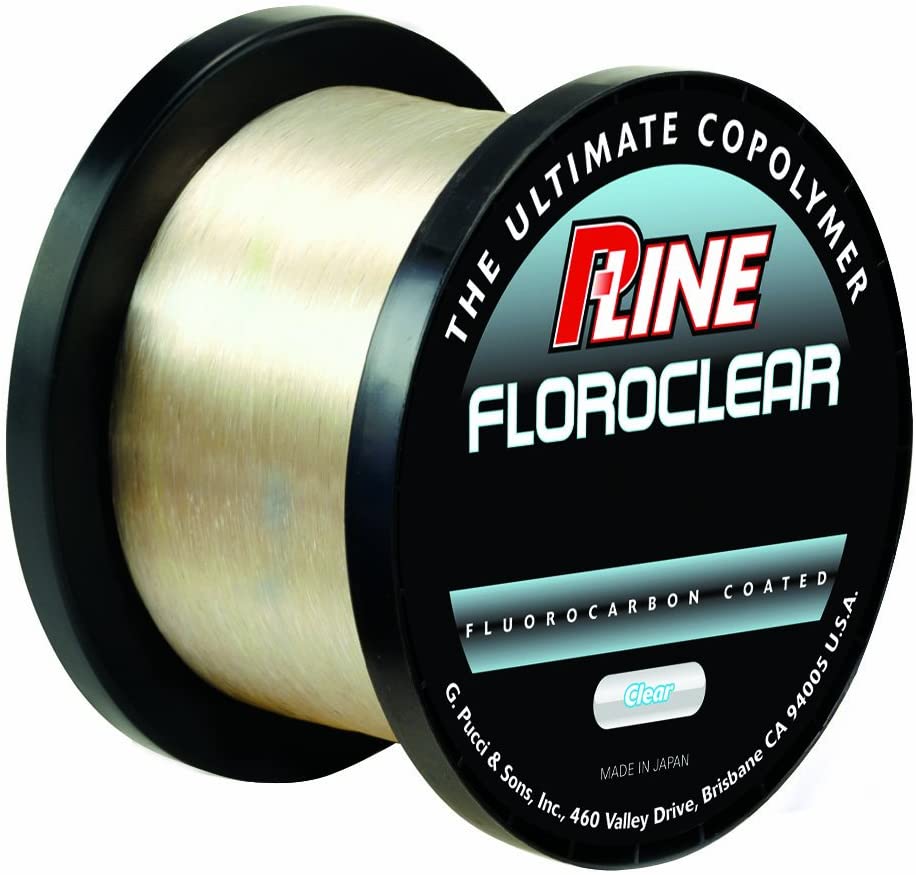 |
| Best Overall Line | Zero Stretch Best Casting | Nearly Invisible in water |
| Shortest Lifespan | Less Abrasion Resistant | Stiffer and Expensive |
| Price $ | Price $$$ | Price $$$$ |
Surf Fishing Gear
One thing you’ll quickly notice about surf fishing tackle, is it tends to be bigger and heavier than most of your freshwater fishing gear. There is a wide variety of fish to target from the beach front and in all different sizes. From smaller perch, whiting and corbina, to red drum, speckled trout all the way up to very large sharks of 10 feet or more.
Essential Surf Fishing Gear:
- Surf Fishing Rods, surf rods are typically longer and heavier duty than standard rods. – read more.
- Surf fishing Reels,larger and stronger with greater line capacity to handle big fish. – read more.
- Surf fishing Rod and Reel Combos, pre-matched rod and reel set ups for surf fishing – read more.
- Sand Spike Rod holder, holds your rods securely while you wait for that big bite. – read more.
- Surf Fishing Rigs, terminal tackle for fishing the surf. – read more.
- Surf fishing Carts, for beaches that won’t allow vehicles you need a way to carry your gear – read more.
- Rod Racks for Vehicles, carry your rods out of harms way and easy to access- read more.
- Beach Camping Gear, in case you want to fish all night or for several days – read more.
Now, can you use freshwater tackle for surf fishing? Yes, for the small to medium species, you’ll be fine but the problem will be after the fishing trip. Freshwater gear is not built to handle the corrosive elements of saltwater fishing. I don’t care how well you think you wash up your gear afterwards, saltwater will take years off the life of your freshwater tackle.
Surf fishing gear is made with corrosion resistant components from rod eyes to reel gears, handles and drags, to stainless steel hooks, they are designed from the ground up to withstand the harsh saltwater conditions.
Saltwater surf fishing gear will do fine in freshwater, although it might be a bit oversized, but freshwater gear will take a beating if you use it in saltwater.
But, you can use freshwater fishing line in saltwater and vice versa. In fact, most fishing lines aren’t even labeled as freshwater or saltwater. The main difference between fresh and saltwater fishing line is typically the stiffness of the core. Generally saltwater lines are used in warmer waters and are made with stiffer cores, where freshwater lines having more flexible cores for use in colder waters.
Surf Fishing Line
What are the Best Options for Surf Fishing Line?
There are three basic types of fishing line to consider for surf fishing, braid, monofilament and fluorocarbon. And, they all have their Pros and Cons so which one is best for you and your fishing style and situations will depend on several factors.
When choosing a fishing line for surf fishing it will be important to consider where you will be fishing, what species you will be fishing for, and how you will be fishing. Will you be fishing an area with rocks or shell? Or, will you be fishing a beach with a fine sand bottom? Will there be seaweed or kelp beds? It will make a difference in what fishing line will perform best.
Are you going to be fishing for surf perch, bluefish, redfish, or bull sharks? Again, this will play an important factor in your fishing line choice. And: How will you be fishing? Will you be using lures or natural baits? What size lures and baits? All of this will determine your best surf fishing line.
If you make the wrong choice, you could lose a lot of tackle and a lot of fish. Probably the most important factor in choosing a fishing line for surf fishing is abrasion resistance. If you are fishing a beach with fine sand, abrasion resistance is not as much of an issue.

But, if there are rocks and or shells with sharp edges, or piers and jetties covered with barnacles, you will need a line that can take some punishment. Are you going to be fishing beaches with seaweed or kelp and other weeds? You will need to use a line that can cut through the vegetation rather than simply wrapping up in it. And will you be casting lures or setting baits?
Some lines are more sensitive and better for fishing with lures, while others have some stretch and abrasion resistant making them a better choice for bottom fishing with baits. Other factors to consider when choosing a fishing line for surf fishing are, Line color or visibility, and pound test or breaking strength.
Best Surf Fishing Line for Lures vs. Bait
If you are going to be casting the surf with artificial lures, you will need a line that casts well and is sensitive enough to detect what your lure is doing and when a fish takes it. Braid would be your best choice as it has nearly zero stretch, is very sensitive so you feel every twitch you lure makes, and it is smaller in diameter for a given strength making it much easier to cast. It’s more visible in the water however, so a short mono or fluorocarbon leader would be a good idea.
If you will be fishing with natural baits at or near the bottom, monofilament will be your better choice as it is more abrasion resistant than braid, has some stretch so when the fish strikes it will act as a shock absorber increasing your hook up rate and reducing the chances for damage to your rods and reels.
I’ve used both, and I have straightened hooks, bent swivels, and broken reels from using braided line while fishing with bait. Big fish hit hard and run fast putting a lot of pressure on your gear. The stretch in monofilament will absorb some of this initial force and protect your gear.
Now, If you still insist on braided line for bait fishing, I recommend you use a top shot of monofilament or fluorocarbon between the braid and your leader or rig. You will get some shock absorbing benefit, and it is less visible to the fish so you may get more bites as well.
Fishing line comes in a whole rainbow of colors and even multi colored and “camo”. I mean everything from clear to pink to hi-vis yellow, red, orange, green and more. As if we didn’t need one more thing to think about, when deciding on a good surf fishing line. 😉
What is the best color fishing line for surf fishing?
Everybody seems to have their favorite and there are some specific applications for some colors, but there is also the tackle manufactures trying to catch fisherman too. In general, you don’t want a line that is too visible to the fish. It can reduce your catch rate as some fish become line shy
So, that would tend to favor the lines that were more clear, or colored lines that match the water conditions like light blue and in some cases greens. The Hi-Vis (high visibility) lines are great when you need to see your line, and if you use a clear leader, you can avoid spooking the fish.
If you are fishing in blue water then a blue tinted line will blend in and “disappear” in the water. In more green or stained water, the green lines blend in and become less visible. Studies have suggested that multi colored lines that blend into the background are less apt to cause fish to shy away from your bait, think camouflage.
Now, what about red fishing lines? Red is the first color to fade out as you descend in the water column. So red lines are easily visible to the fisherman, but underwater become much less visible. I’ve tried red line and I haven’t seen any difference in catch rates.
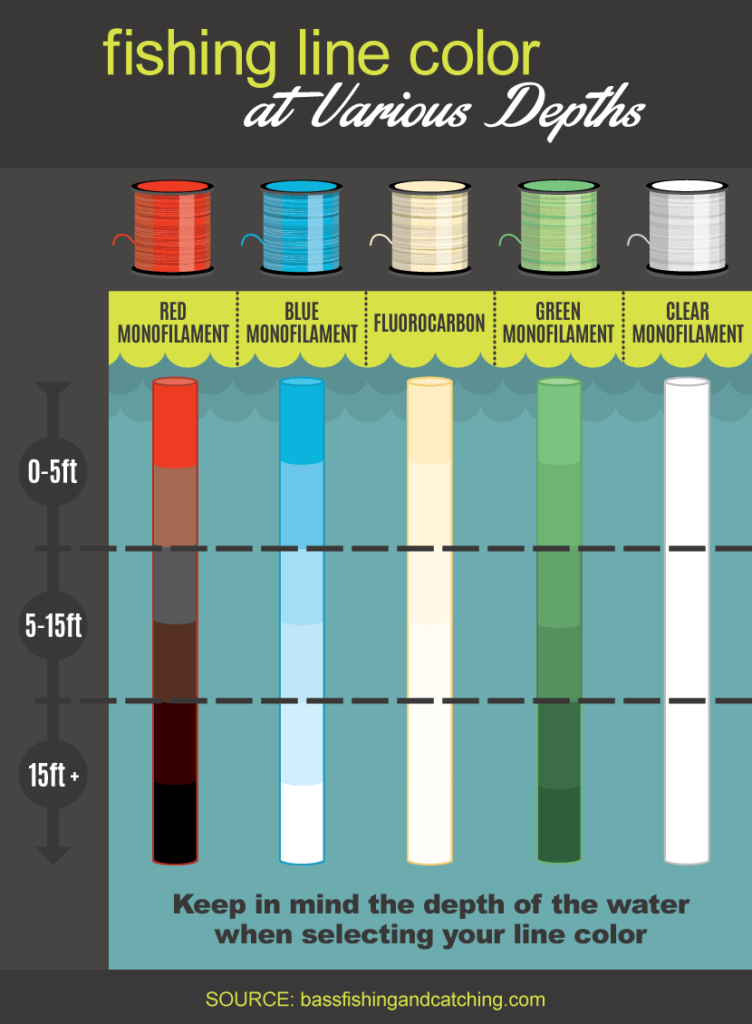
The least visible fishing lines are the fluorocarbon lines. It has the same light refraction properties as water, making it virtually invisible or as close to invisible as you can get with a fishing line. It’s also the most expensive, so it is the less used as a main line and more often used as a leader line attached between a monofilament or braid main line, and the bait or lure.
What pound test line should I use for surf fishing?
Fishing Line “test” is an estimate of its breaking strength measured in pounds or kilograms. And, much like choosing a fishing line type, the best pound test fishing line will depend on what you are fishing for and how you will be fishing. Heavier line for bigger fish, lighter line for smaller fish.
Lighter lines are easier to cast and, if you need to cast long distances or are casting lures, a lighter line will be a better choice. I carry several rod and reel setups spooled with different lines for the different situations I might face on a surf fishing trip. Heavier setup for fishing baits on the bottom for big red fish and sharks, lighter gear for casting artificials for speckled trout, Spanish mackerel etc.
One of the features of braid fishing lines is they will be smaller diameter for a given pound test. This smaller diameter makes them easier to cast and stronger than mono or fluorocarbon of similar diameter making braid a great choice for fishing lures.
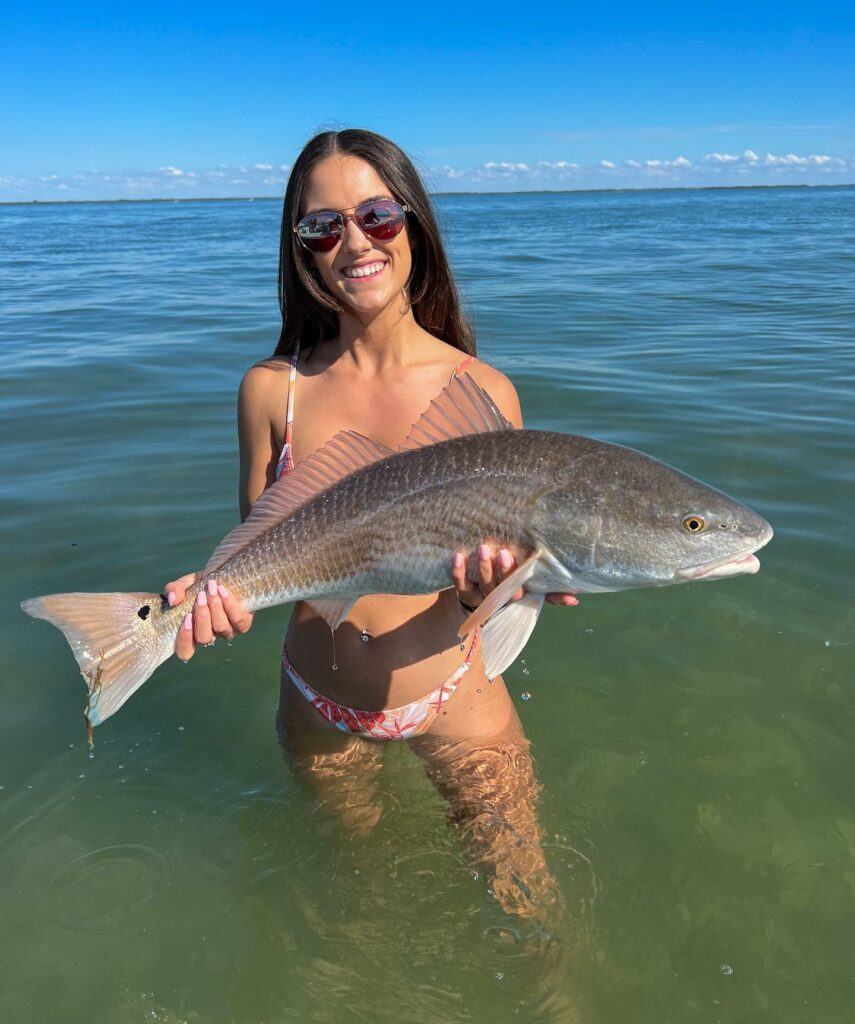
So, what is the best all around pound test line for surf fishing? A 20-30 pound test braided main line with an appropriately sized monofilament or fluorocarbon leader makes a very effective and versatile setup for surf fishing. It’s easy to cast if you want to cast with lures, and heavy enough to tackle larger predators, like bull red fish and sharks, while fishing bait.
Braid is more expensive so you may want to consider monofilament in 15-20 pound test for most surf fishing situations. Still, small enough diameter that you can cast lures, and enough strength to fish natural baits for bigger fish. Just make sure you check your drag and have plenty of line on your reel for those long runs.
I use 30 pound monofilament for my bait rigs, and 15 pound monofilament for my lure casting outfits. For my shark rigs, I use an 80 pound braid with a 100 yard top shot of 80 pound monofilament to act as a shock absorber and to better withstand abrasions from sandbars and shell.
Whatever line you chose, be sure to check it often. Monofilament and fluorocarbon lines will deteriorate overtime with exposure to the sun’s UV rays. It’s recommended that you change out your monofilament lines at least once a year and fluorocarbon every three years. Braided line is not affected by UV rays so it will last up to 10 years, with proper care, before needing replacement.
Monofilament Line For Surf Fishing
Monofilament fishing line has been around since the 1950s and has seen tremendous improvements and innovations over the years. Monofilament is a great line for surf fishing as it combines low underwater visibility, abrasion resistance, shock absorbing stretch and low cost. Just like it sounds, monofilament is made of a single strand fiber or filament. The most commonly used material to make monofilament fishing line is nylon.
Monofilament fishing lines are, by far, the most popular for most fishing applications. They come in a wide variety of strengths, colors, diameters and price points. It’s thin, strong, castable, water resistant and has good knot strength.
For surf fishing, a good monofilament in 15- 30 lb test will give you a line still limber enough for long casting with the strength to handle some of the bigger predators you may encounter. Overall, mono may be the best fishing line for surf fishing.
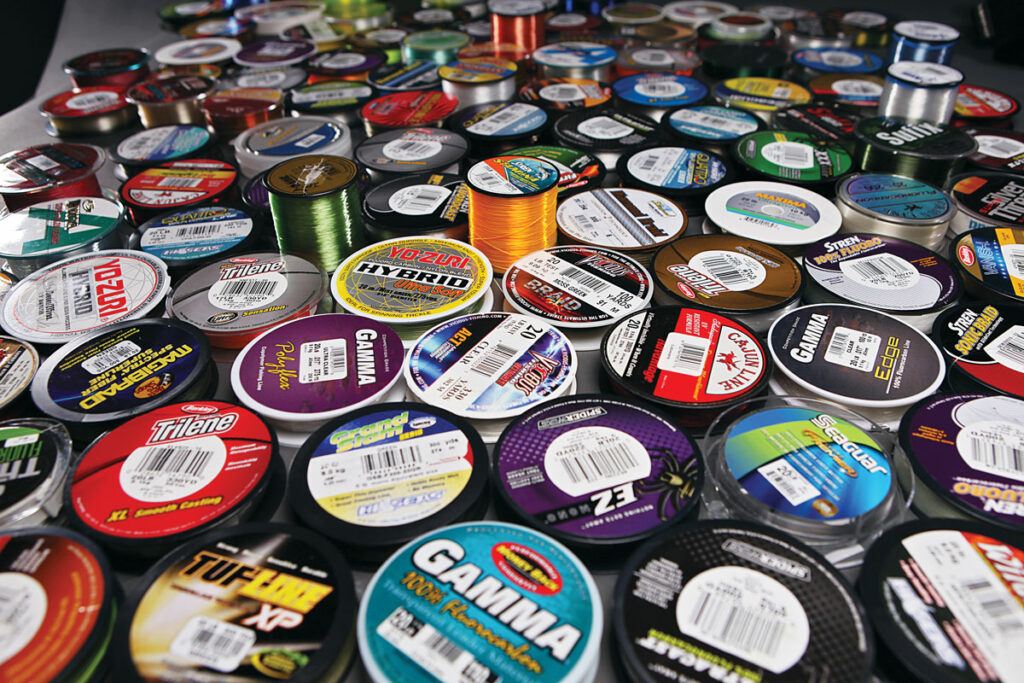
Pros and Cons of Monofilament line for Surf Fishing
Monofilament has some advantages for surf fishing:
- Wide variety of options and very economical
- More durable and abrasion resistant than braid.
- Shock absorbing high stretch properties are an advantage with bigger fish.
- Great for fishing natural bait rigs on the bottom or around structure.
- Natural buoyancy and slow sink rate produces a more natural presentations.
- Lots of color choices to match water color and clarity.
- Nearly 70 years of innovations and proven performance.
- Makes a great leader material when surf fishing with braided lines.
Now monofilament isn’t without its drawbacks:
- It has a larger diameter when compared to braid of the same strength meaning your reel won’t hold as much line.
- The larger diameter monofilament will not cast as easy or as far as braid fishing lines.
- Larger monofilament line can create more drag in the current and tides.
- The shock absorbing stretch of monofilament can make bite detection, particularly at long distances, harder.
- Monofilament breaks down and becomes brittle overtime and will need more frequent replacement.
So, what is the best uses for monofilament when surf fishing? if you are fishing natural baits on the bottom and or around obstructions like rocks and pilings, monofilament is the best option. It can also be used as a shock leader or as a top-shot over braid.
Fluorocarbon fishing line looks very similar to monofilament but they are made of two entirely different materials. Monofilament is made of a single strand of nylon, where fluorocarbon is made of a material called polyvinylidene fluoride (PVDF) which is a stiffer, denser material that is nearly invisible under water.
Fluorocarbon Line for Surf Fishing
Fluorocarbon fishing line is made of the fluoropolymer PVDF and it is valued for its refractive index, which is similar to that of water, making it less visible to fish. Fluorocarbon is also a denser material, and therefore, is not nearly as buoyant as monofilament. Anglers often utilize fluorocarbon when they need their baits to stay closer to the bottom without the use of heavy sinkers
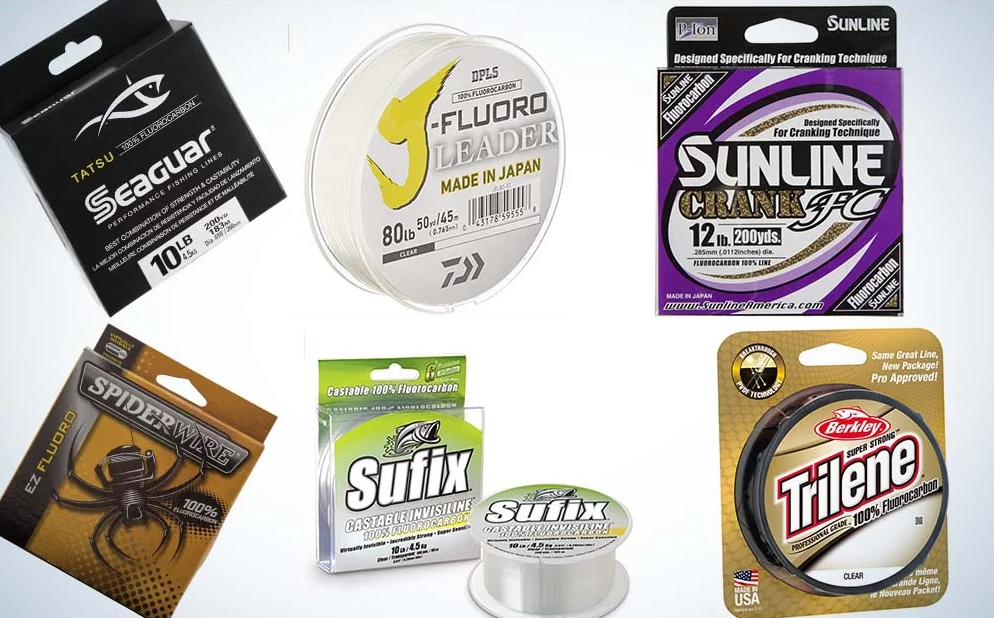
Fluorocarbon is good for surf fishing because it is the most transparent line underwater. This means that fish are less likely to notice that the bait or lure is attached to a line.
It’s also strong and resists abrasion, and is less affected by exposure to UV rays compared to monofilament.
Fluorocarbon line tends to be heavier and stiffer than monofilament. It doesn’t float, so it is not ideal if you are topwater fishing or trying to fish close to the surface. Fluorocarbon line has very little stretch and is stronger and more abrasion resistant than monofilament fishing line of the same diameter. Fluorocarbon lines are also more expensive than comparable monofilament lines.
Due to its low visibility and strength, fluorocarbon lines make great leaders for surf fishing. It’s strong so you have less chance of a break off when casting heavy rigs. And, since it is nearly invisible underwater, fish will be less likely to shy away from your baits.
Pros and Cons of Fluorocarbon line for Surf Fishing
The advantages of fluorocarbon fishing line:
- Harder material with less stretch making it more sensitive
- Nearly invisible underwater so fish don’t see your line.
- More resistant to UV rays, so it lasts much longer
- More abrasion resistant than both monofilament and braided lines.
- Low stretch makes it better for detecting strikes and hook sets.
The disadvantages of fluorocarbon fishing line:
- More expensive than other lines
- Stiffer line that can be harder to cast
- Heavier and denser than other lines so it sinks which can be a problem when fishing surface lures.
Over the long term, fluorocarbon is more resistant to the elements like U.V. rays, rain and humidity, and extreme temperatures (both hot and cold) that can cause monofilament to break down and lose strength. Fluorocarbon line can last up to 5 years and does not require any special storage conditions.
But for most fishing situations, fluorocarbon lines should be replaced every 2 to 3 years at a minimum. More often for heavy and frequent use conditions. In my opinion, it is not the best fishing line for surf fishing.
Saltwater Braided Fishing Line for Surf Fishing
Braid fishing line has become one of the most used types of line for surf fishing in recent years. They are stronger and smaller diameter than either monofilament or fluorocarbon making them easier to cast and create less drag from wind, waves and currents. But is it the best fishing line for surf fishing?
Modern braided fishing lines are made of woven strands of spectra, Dacron or micro-dyneema fibers. All of these man-made fibers produce a fishing line with very low stretch, exceptional strength and with a thinner diameter than either monofilament or fluorocarbon fishing lines.
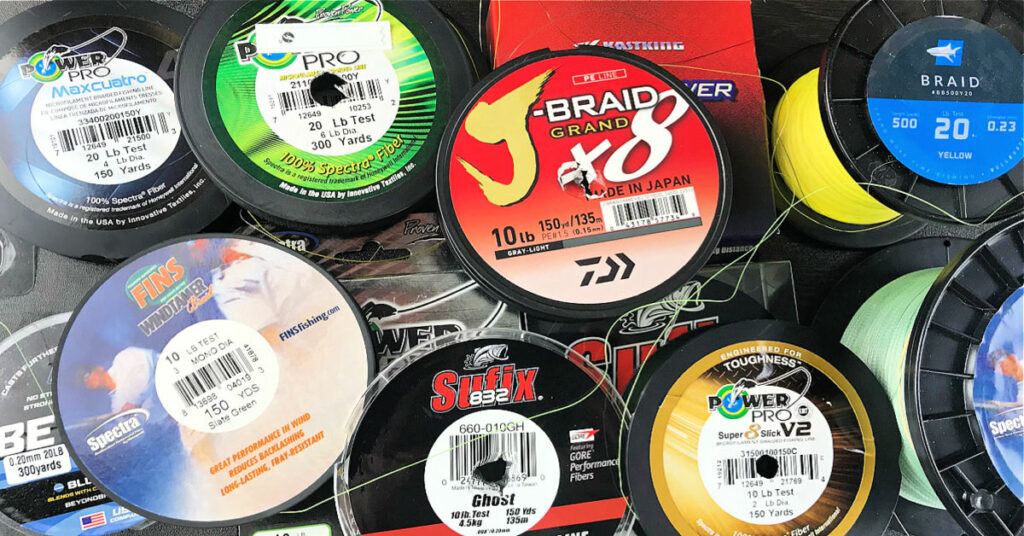
Braided line is much more sensitive, and has almost zero stretch, so you get a greater feel for what is happening on the other end of your line which can result in better bite detection and hook sets. But, this low stretch can put extra stress on your rods, reels and rigs.
Braid fishing lines are much more visible underwater, so fish may avoid your baits. A good length of monofilament or fluorocarbon leader added to the end of your braid can be a good solution. Braid is also very durable and will last for up to 10 years if well maintained.
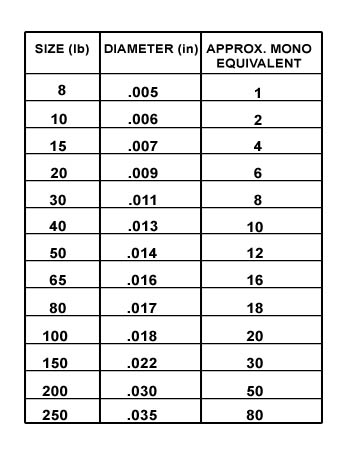
The smaller diameter of braid means you can hold much more line on your spool than other lines. A 30 pound test braid will have a similar diameter to a 8 pound monofilament.
This strength to size ratio makes braid an excellent choice for casting lures in the surf. Braid is not as abrasion resistant as fluorocarbon or monofilament and is prone to cut-offs when fishing around rocks, shell, pilings or other obstructions.
And, when you get snagged, braid fishing line can be tough to break and can cut your hands with just a slip.
Pros and Cons of Braid for Surf Fishing Line
The Pros of using Braid for Surf Fishing are:
- Thin diameter for longer casting and less wind, wave and current resistance.
- Extra sensitivity for bite detection and hook sets.
- More durable and longer lasting than other fishing lines.
- Low stretch for better hook sets.
- Stronger for a given diameter than either fluorocarbon or monofilament.
The Cons of Surf Fishing with Braid.
- Braid can be hard on your casting thumb or finger and even cut you.
- Birds nests or backlashes can be almost impossible to untangle.
- Not as abrasion resistant and prone to cut-offs.
- Low stretch can be rough on your tackle
- Low stretch can result in some hooks pulled from fish’s mouth.
- Braid is expensive when compared to monofilament.
For casting lures in the surf, or casting baits where there are no sharp underwater obstructions, braid makes a great choice for your mainline. It’s more expensive however, and I would recommend you use either a monofilament or fluorocarbon leader to reduce visibility and for stretch to absorb the shock of a hard strike.
Best Fishing Line for Surf Fishing
OK, so what is the best fishing line for surf fishing? It’s going to come down to personal preferences and your own fishing situations. In reality, you can use any of the three we discussed here today and do just fine and catch fish. If you are casting lures in the surf, a good braid with a monofilament or fluorocarbon leader is going to be your best choice.
For fishing with natural baits and or around obstructions like rocks, shell and pilings, monofilament will be a better choice. And if line visibility is an issue, like in gin clear water, then a fluorocarbon line will work best. If the price of fluorocarbon is too much, then opt for a fluorocarbon leader to get the reduced visibility and go easier on your budget.
For most surf fishing applications, and particularly for beginners, I recommend monofilament fishing line. It comes in a variety of strengths and colors, has good abrasion resistance, is fairly easy to cast and is the most economical. Is it the absolute best? Of course not, but it will work for any surf fishing condition and is the best choice for fishing bait on the bottom and around underwater obstructions.
Braided line is great for its cast ability, strength, small diameter and low stretch. But, it is expensive and less resistant to abrasion. It’s also very visible underwater so you will need to consider a monofilament or fluorocarbon leader when using braid.
Fluorocarbon is nearly invisible underwater and more resistant to the elements than monofilament. It’s more expensive, but will last much longer. It’s more abrasion resistant than braid with low stretch characteristics as well. It’s stiffer than monofilament and its larger diameter makes it harder to cast than either braid or monofilament. For my money, it is better suited to leader material rather than your main line.
Frequently Asked Questions on Fishing Line for Surf Fishing

What type of fishing line is best for surf fishing?
The best type of fishing line for surf fishing is typically a strong and abrasion-resistant monofilament or braided line. Monofilament lines are popular due to their low visibility in the water, while braided lines offer superior strength and sensitivity.
What pound test line should I use for surf fishing?
The pound test line you should use for surf fishing depends on the size of fish you’re targeting and the surf conditions. As a general guideline, using 12-20 lb test line is suitable for smaller fish like snook or redfish, while 20-30 lb test line is more appropriate for larger species such as striped bass or tarpon.
How long should my fishing line be for surf fishing?
The length of your fishing line for surf fishing is usually determined by personal preference and the casting distance you want to achieve. Most anglers use a line length between 200-300 yards to ensure they have enough line to cast beyond the surf zone.
Should I use a leader with my fishing line for surf fishing?
Yes, using a leader is highly recommended for surf fishing. A leader, typically made of fluorocarbon or monofilament, helps prevent fish from seeing the main fishing line and provides added abrasion resistance against the rough surf and potential encounters with rocks or debris.
How often should I replace my fishing line for surf fishing?
It’s a good practice to replace your fishing line for surf fishing at least once per season or whenever you notice signs of wear and tear, such as fraying, discoloration, or reduced strength. Regularly inspecting your line and replacing it as needed ensures optimal performance and reduces the risk of line breakage.
Can I use a braided line directly on my surf fishing reel?
Yes, you can use a braided line directly on your surf fishing reel. However, it’s advisable to add a backing of monofilament line first to prevent the braided line from slipping on the reel’s spool. The monofilament backing provides better grip for the braided line and also helps save cost as braided line can be more expensive.
Does the color of the fishing line matter for surf fishing?
The color of the fishing line can make a difference in certain conditions. Generally, a clear or low-visibility color like green or blue is preferred for surf fishing as it is less likely to spook fish. However, in murky or stained water, using a high-visibility line like yellow or hi-vis green can help you track your line and detect bites more easily.
How should I store my fishing line for surf fishing?
To ensure your fishing line remains in good condition, store it away from direct sunlight and extreme temperatures. A cool, dry place like a tackle box or a storage bag is ideal. Avoid storing your fishing line near sharp objects or chemicals that could damage it.
Spool Up and Send it!
So, the best fishing line for surf fishing will ultimately depend on you and your fishing style and situation. One thing is for sure, there is know shortage of quality fishing line options, almost too many. You can spend more time trying to decide than you do actually fishing. And, that defeats the whole purpose.
So, try not to over think it. Whether you choose monofilament, braid or fluorocarbon just keep in mind the type of fishing you will be doing and what fish you are trying to catch.
In my opinion, a good monofilament is your best all around choice, it comes in a variety of colors and strengths allowing you to fish a variety of methods in a wide variety of fishing scenarios.
Braid is great where you need that added sensitivity to feel subtle actions of your lure, but I would recommend a fluorocarbon or monofilament leader to reduce visibility and provide some shock absorption.
Fluorocarbon is on the expensive side but is very tough and will last longer without needing replacing compared to monofilament. It’s the least visible in the water and great when targeting finicky and line shy fish.
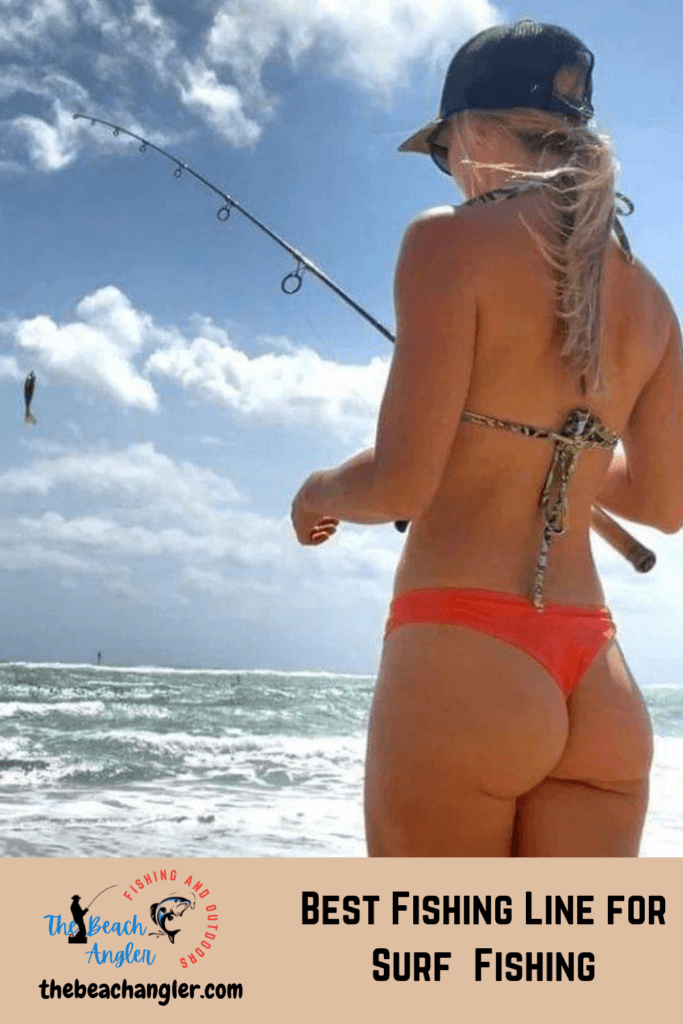
To save some money and still get the benefits of fluorocarbon, you can use it as a top shot or leader. The important thing is to: Pick one and go fishing! Nothing like trying it out on real fish in your specific fishing style and situations.
As always, stay safe, enjoy the journey and please try to leave it cleaner than you found it. If you have any comments, questions, ideas or suggestions please leave them in the comment section below and I’ll get back to you asap. You can follow us on Facebook: Rex The Beach Angler, Instagram: thebeachangler7, Twitter: @AnglerBeach, and YouTube: Man Art Creations.
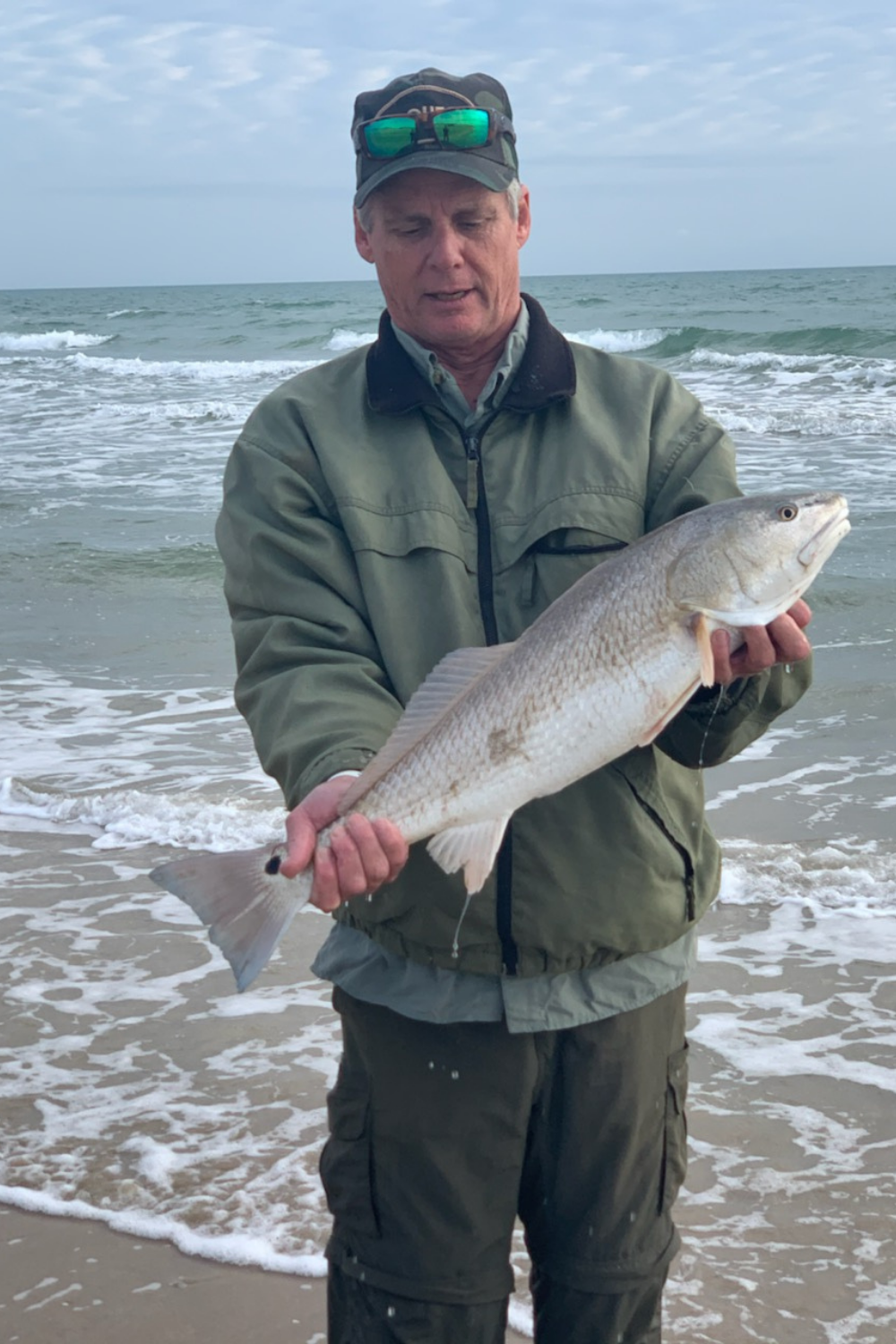
A life long surf fisherman with 50+ years of experience, I am also an avid hunter and outdoorsman. I will be sharing my passion for the outdoors with you so be prepared for hunting, fishing, camping, hiking and more. Along with gear reviews and the latest trends and innovations in the outdoor industry.
